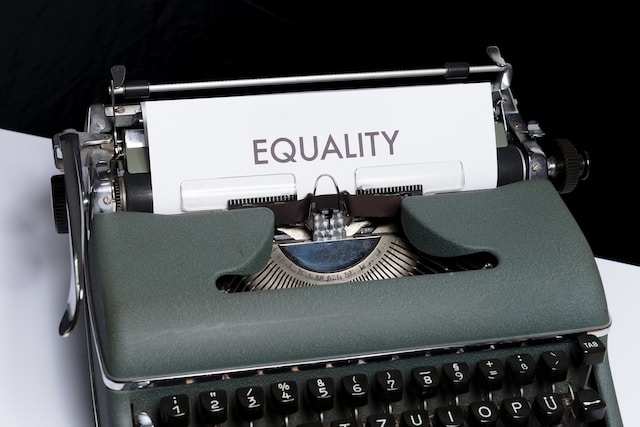How Women are Using Technology to Overcome Gender Obstacles in Careers

Sexism and misogyny have undermined women’s hard work and talent for centuries. However, women also have a rich history of using technology to overcome the gender obstacles they face.
Ada Lovelace is renowned for writing the first computer program, Katherine Johnson checked and re-checked the calculations for the first NASA orbital mission, and Annie Easley programmed the first hybrid vehicle.
Today, women are using technology to advance gender equality in industries around the world. Social media helps professional women build digital communities, and digitization ensures that women have access to all of the learning materials and information they need to find professional success.
Career Moves
Everyone has the right to advance their career and progress through the ranks. However, in the U.S., a study of a large retail chain found that women were 14% less likely to be promoted than their peers who are men. According to MIT researcher Danielle Li, this discrepancy is due to negative stereotypes about women supporting women and erroneous beliefs about women’s potential in the workplace.
However, research indicates that having more women in leadership can be beneficial and it can actually greatly improve a brand’s reputation. For instance, research showcased in Forbes indicates that companies with good brand reputations often have twice as many female leaders as brands with poor reputations.
However, the promotion gap still exists, and it forces some women to look elsewhere for employment. Traditionally, switching employers required a major move and plenty of lost productivity. Today, however, women can leverage social media platforms like LinkedIn to minimize their losses and find a workplace that supports them.
Women can also use women-only job directories to find employers who are conscious of gender bias in the workplace. Indeed has a “women-only” filter and sites like Where Women Work offers up-to-date listings for employees around the world.

Digitization and Freedom of Information
Women and girls largely outperform men and boys in graduation rates. However, there remain a few fields where men dominate the educational landscape and women are largely excluded.
Currently, women only make up 28% of the STEM workforce. The women who do enter STEM fields typically gravitate towards careers in biological sciences and chemistry. This is a major issue, as women are typically underrepresented in fast-growing, high-paying fields like computer science and engineering.
That may be about to change thanks to widespread digitization. Digitization is a great equalizer, as more women can access the educational technology they need. Many learning programs are entirely automated, too, meaning women in STEM don’t have to pay for private tutors or teachers. This means that more women can follow in the footsteps of Ada Lovelace, and learn computer programming languages from the comfort of their own homes.
Widespread digitization and innovation also make remote work easier. Remote work is great news for all women, as working from home typically means that employees have greater control over their daily schedule and are able to achieve a better work-life balance.
Remote work also gives mothers a chance to re-enter the workforce. Women can explore a range of full- and part-time opportunities that allow them to balance their family life with their professional aspirations.

Freelancing
Remote work is great for women who want to strike a better work-life balance and work from home. However, many encounter the same issues of sexism and misogyny while working remotely.
Entrepreneurial women can sidestep sexism by using new technology to achieve their career goals or become their own bosses. Recent improvements to videoconferencing technology and AI augmentation make it easier for women to go it alone as women can build digital networks and find folks who are equally committed to their cause.
Women who want to network no longer need to book expensive flights or attend in-person events. With just a laptop and a stable connection, freelancing women can attend events hosted by industry leaders to network and discover more opportunities for their businesses.
Technology can help women run well-rounded businesses, too. Few entrepreneurs are masters at every element of their business, and many would rather take on extra work rather than submit invoices and tax returns. AI programs can help women make their freelancing dreams become a reality by automating invoicing, customer service, and social media posting.
AI and Advocacy
The first computer program may have been written by a woman, but that doesn’t mean that the programs of today are free of sexism and misogyny. A recent UNESCO report titled “I’d blush if I could: closing gender divides in digital skills through education” shows that gender inequality has seeped into AI and is a reflection of wider social inequality.
However, changes to AI algorithms could be made to support gender equality efforts in the workplace. AI algorithms can be modified to exclude gender-coded words like “aggression”, or “dominate”. More inclusive AI algorithms can be developed to avoid unintentional sexism and bias.
For these changes to be effective, more women must be hired to work in AI. Currently, only 22% of the AI workforce are women. This is a major issue for women, and more efforts must be made to improve STEM education outcomes for women.
Women have always found ways to overcome the obstacles they face in their careers. Today, women around the world are utilizing social media and widespread digitization to connect with employers, build their skills, and advocate for greater gender equality.
This guest post was authored by Ainsley Lawrence

Ainsley Lawrence is a writer who loves to talk about how business and professionalism intersect with the personal, social, and technological needs of today. She is frequently lost in a good book.
*******
Ms. Career Girl strives to provide valuable insights you can use. To see more from our columnists and guest authors, check these out! Or subscribe to our weekly email featuring our latest articles. We’re also present on Medium!

